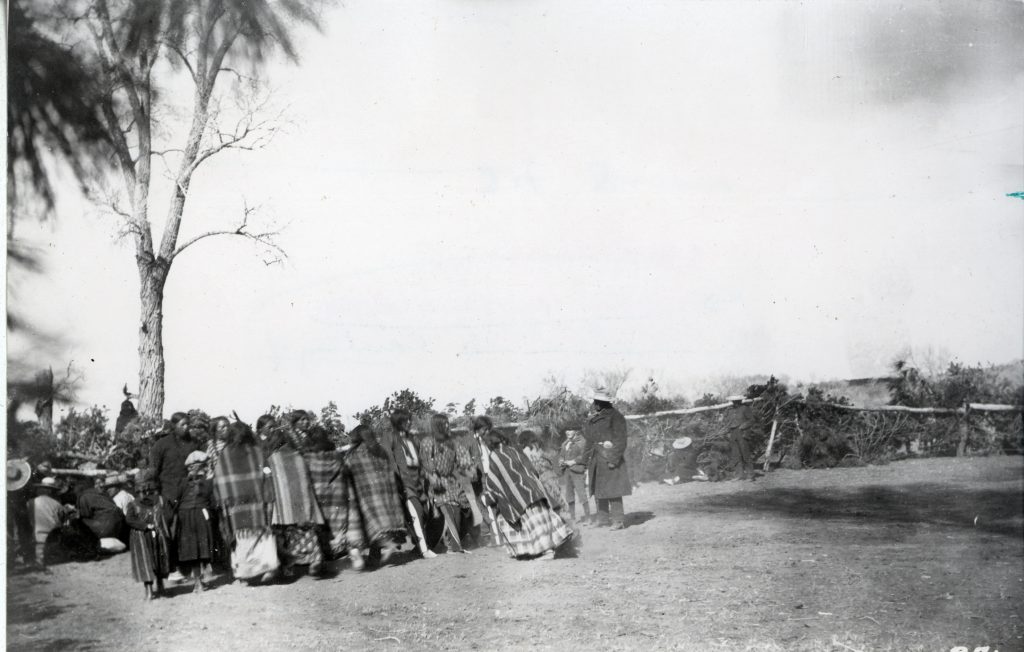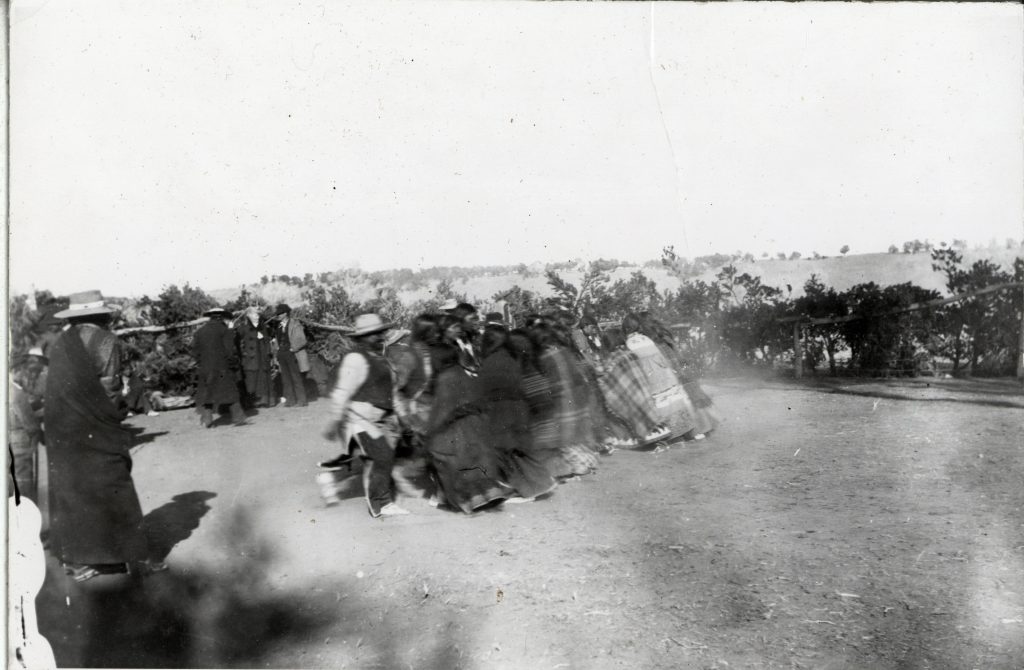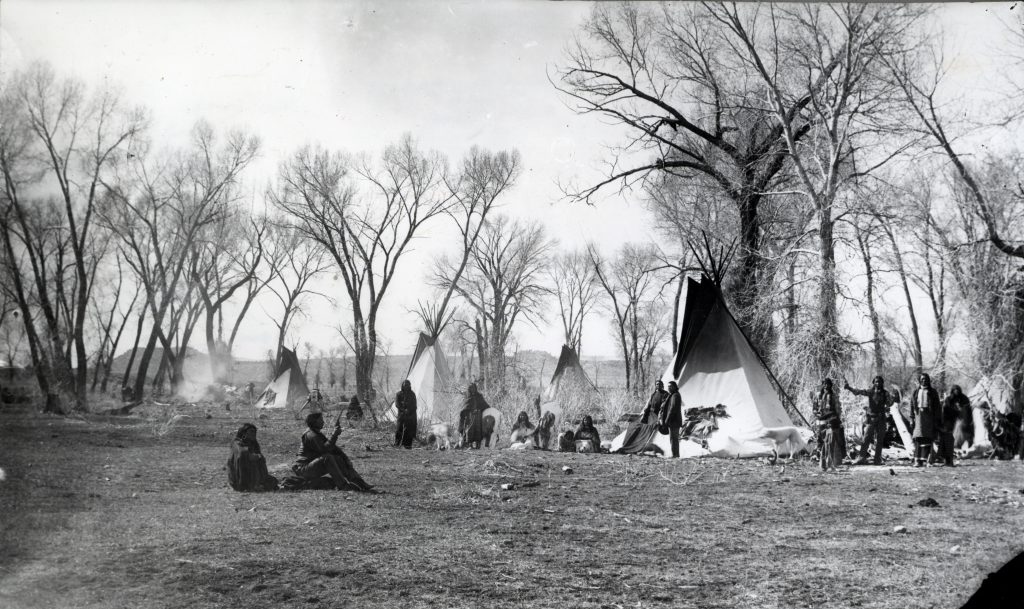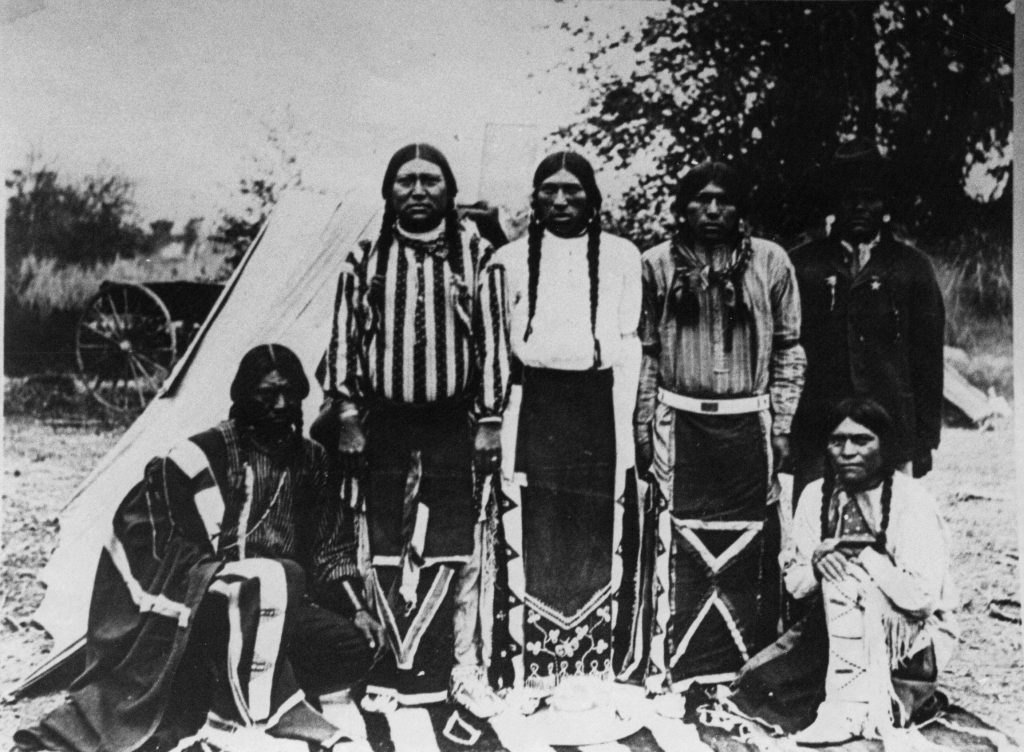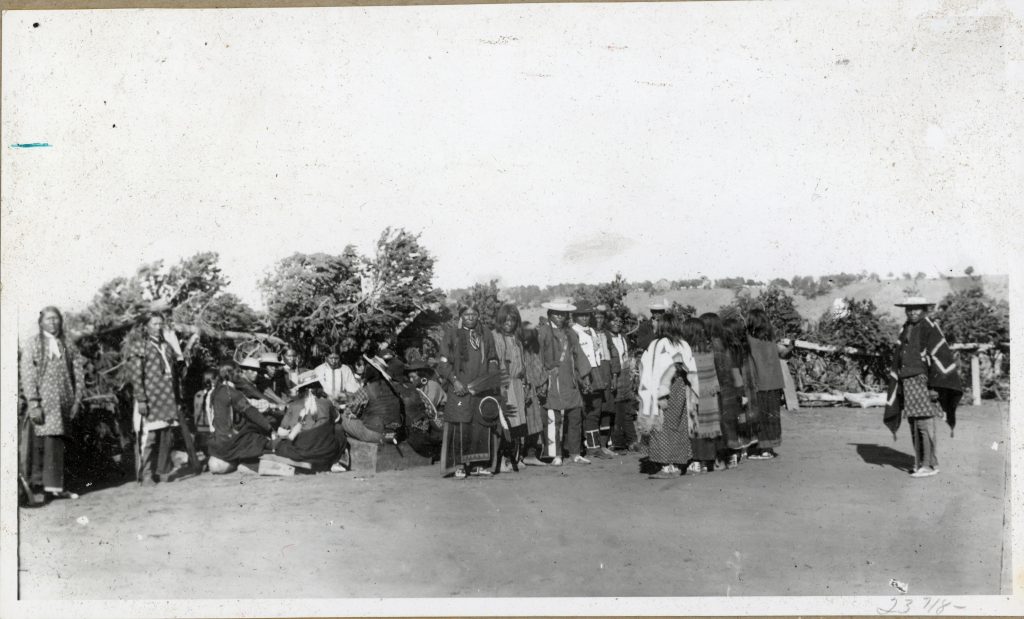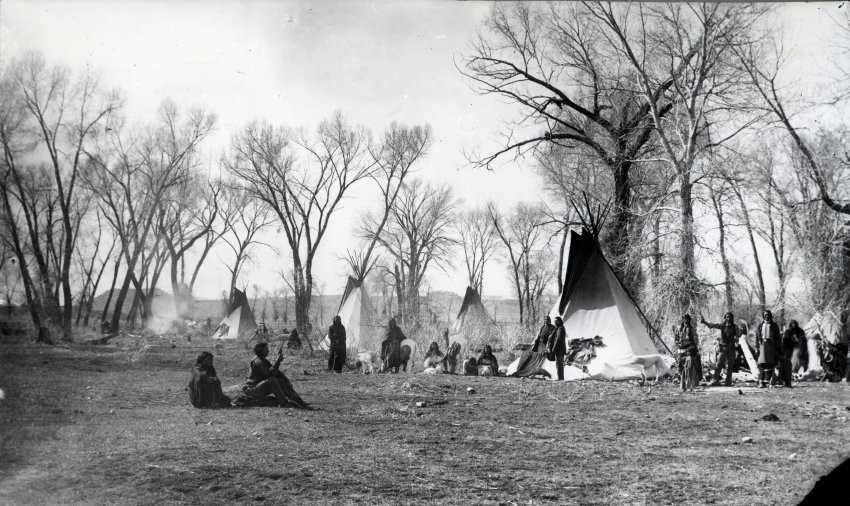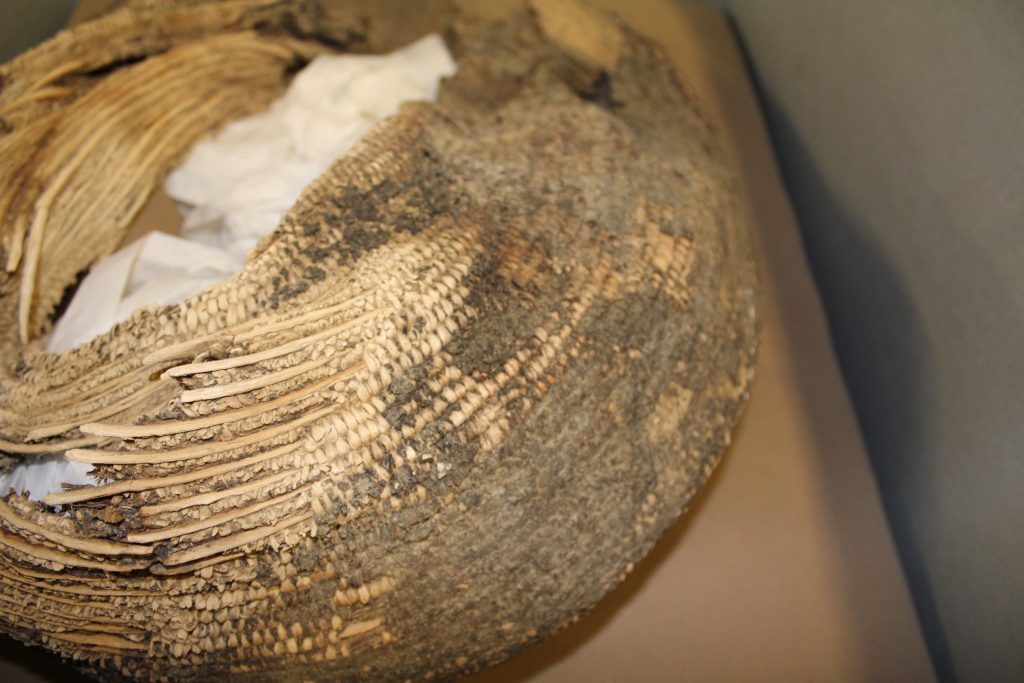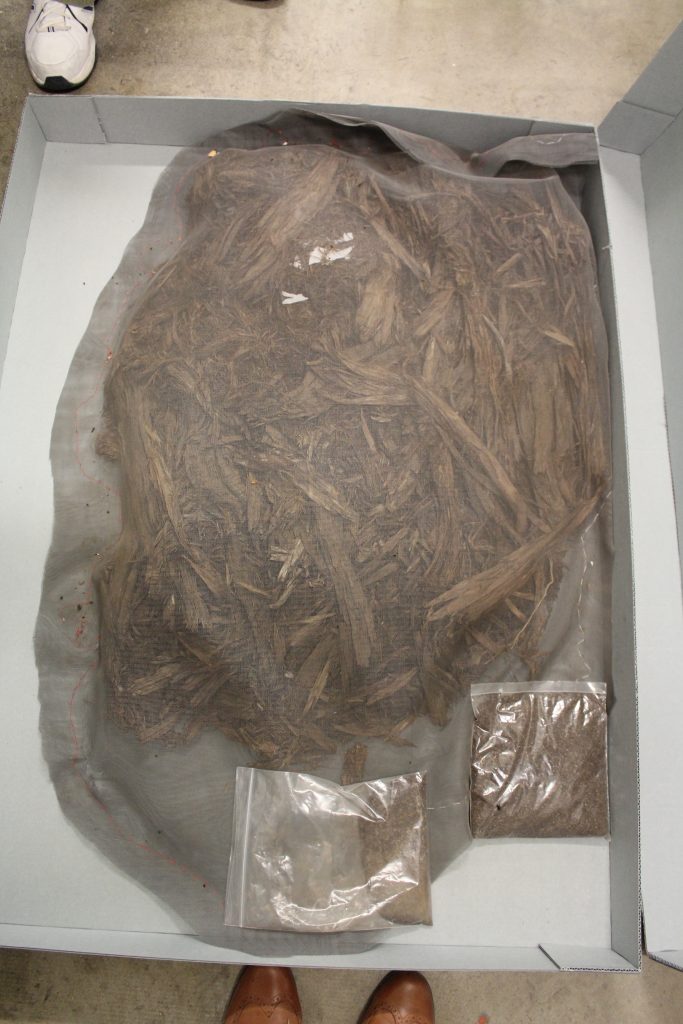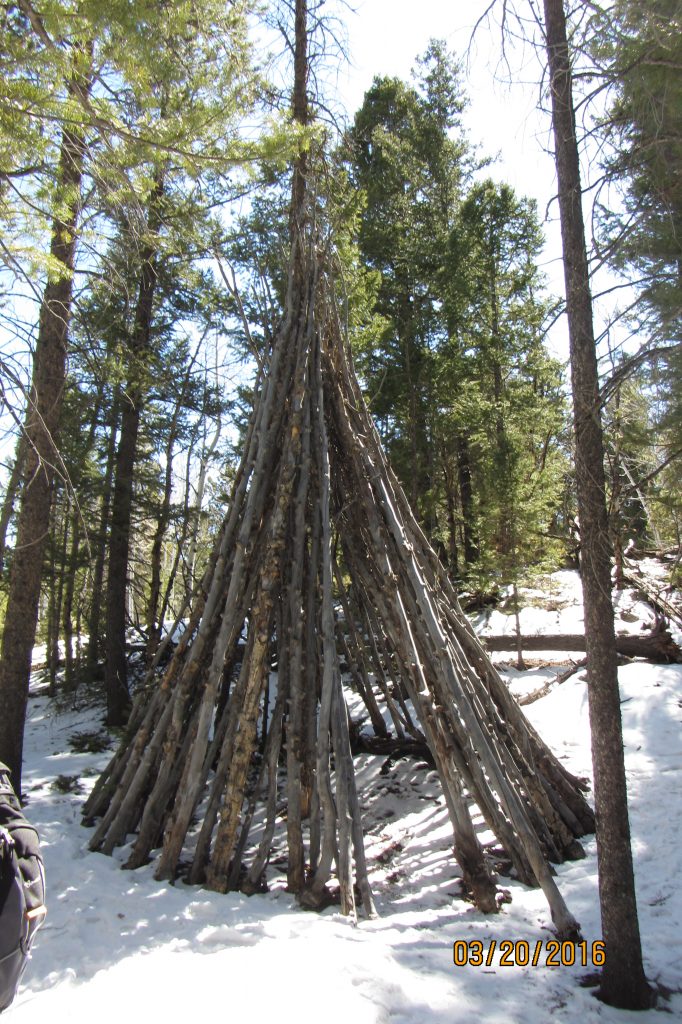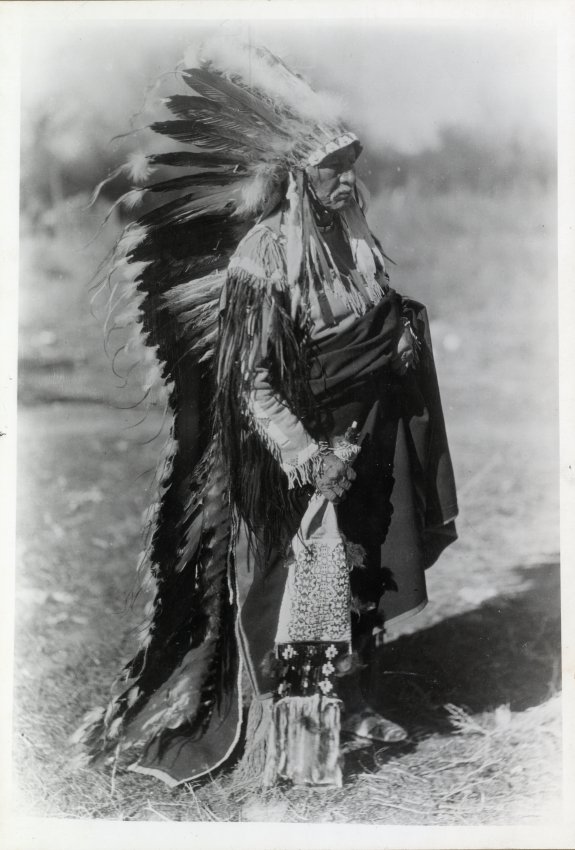Native People
What are the three basic things all humans need to survive?
- Food
- Shelter
- Water
Let’s explore who the first people in Colorado were and how they lived and survived.
Paleoindians – 15000 to 6000 B.C.
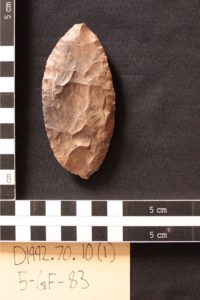 Paleo means “ancient.” The Paleoindian period began during the Ice Age.
Paleo means “ancient.” The Paleoindian period began during the Ice Age.
What did they eat?
- Paleoindians hunted large animals like mammoth, mastodon and ancient bison. Most of the animals hunted by the Paleoindians are now extinct.
- They used large stone projectile points. Two types are called “Clovis” and “Folsom.”
- Paleoindians also collected wild nuts and seeds, fruits, roots and greens.
- They were known as nomadic hunter-gatherers, which means they traveled throughout the seasons to find and hunt food.
Where did they live?
- Paleoindians lived in temporary structures made out of brush or other materials and in natural caves.
- Brush shelters were made of poles that leaned in at the top, tipi-style. The poles were covered with brush, and the brush was covered with mud or animal hides. Animal hides probably covered the doorway to make a door
What did they drink?
- Paleoindians relied on water from springs, seeps, streams, lakes and rivers.
- Most of their campsites were close to water sources.
Archaic People – 6000 to 500 B.C.E.
 After the Ice Age, people needed to adapt to new hunting different animal species and to a warmer climate. This period of change is called the Archaic period.
After the Ice Age, people needed to adapt to new hunting different animal species and to a warmer climate. This period of change is called the Archaic period.
What did they eat?
- Archaic people continued the nomadic hunter-gatherer lifestyle. They hunted animals like deer and elk. They also hunted small game like rabbits.
- Because the animals they hunted were smaller, their projectile points also became smaller too. A new tool was also invented. It was called the atlatl, which was a spear thrower that gave the thrower more power.
- Like the Paleoindians, the Archaic people also gathered wild nuts, seeds, plants and roots.
Where did they live?
- Like the Paleoindians, Archaic people lived in temporary structures and in natural caves.
- Archaeologists find fire pits, known as hearths, at the center of Archaic houses. They were used both for cooking and to heat the house.
What did they drink?
- Like the Paleoindians, Archaic people also relied on water from seeps. springs, streams, lakes and rivers.
- Most of their campsites were close to water sources.
Formative People – 1800 B.C. to A.D.1300
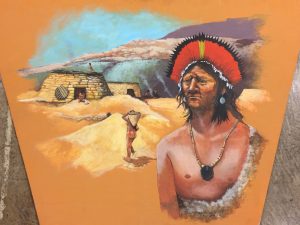 During the Formative period, people started to build permanent buildings and started to grow crops, settling into a new lifestyle.
During the Formative period, people started to build permanent buildings and started to grow crops, settling into a new lifestyle.
What did they eat?
- Formative people started to grow their food, farming the land. The earliest crops were known as the “Three Sisters;” corn, beans and squash.
- They continued to hunt to get their meat. Another invention began to appear, the bow and arrow. Alongside the bow and arrow came smaller arrowheads or projectile points.
- They also continued to gather wild plants, roots, nuts and seeds.
Where did they live?
- The Formative people lived in houses called pithouses or natural rock shelters. Pithouses were usually about 3 feet deep. Because they were partly below ground, they stayed cooler in the summer and warmer in the winter.
- Pithouses were made on a wooden frame covered with mud to weather proof the house.
What did they drink?
- During the Formative period, the invention of pottery made water storage possible. Pottery and baskets lined with pitchallowed water to be carried and stored.
- They still relied on natural water sources.
Ute People – A.D. 1300 to Today
The Ute people were also nomadic hunter-gatherers, moving across the land and migrating with the animals that they relied upon. They were here when the first European explorers came to Colorado. They have faced great change and challenges through their history, but they are still here.
What did they eat?
- In early Ute history, they relied upon hunting to get their meat. They hunted deer, elk, rabbit and other animals we recognize today.
- Before the Europeans came, they used stone tools like earlier people. Once the Europeans came, they started using metal tools and guns for hunting.
- They also gathered wild plants, roots, nuts and seeds.
- Today, the Ute people continue to use traditional hunting and gathering techniques, but they also eat anything you eat, like burgers and tacos and spaghetti.
Where did they live?
- The early Utes lived in a type of brush shelter called a wickiup. Wickiups were made by leaning long poles together in a cone shape and covering the frame in branches that were then covered with mud, brush, blankets, animal hides, grasses or anything handy.
- Once the horse was introduced by the Spanish, the Utes started living in nugans (the Ute word for tipis).The horse allowed them to carry the heavy nugan poles and canvas or hide coverings.
- Today, the Ute people live in homes just like you do.
What did they drink?
- Early Utes relied on natural water sources. They camped near springs, seeps, rivers, lakes and streams so they had access to clean water.
- They had waterproofed baskets to carry water when they were traveling but pottery was too fragile and heavy for a hunter-gatherer lifestyle.
- Today, the Utes rely on plumbing just like you. They also drink juice and soda and sports drinks, just like you.
The People


